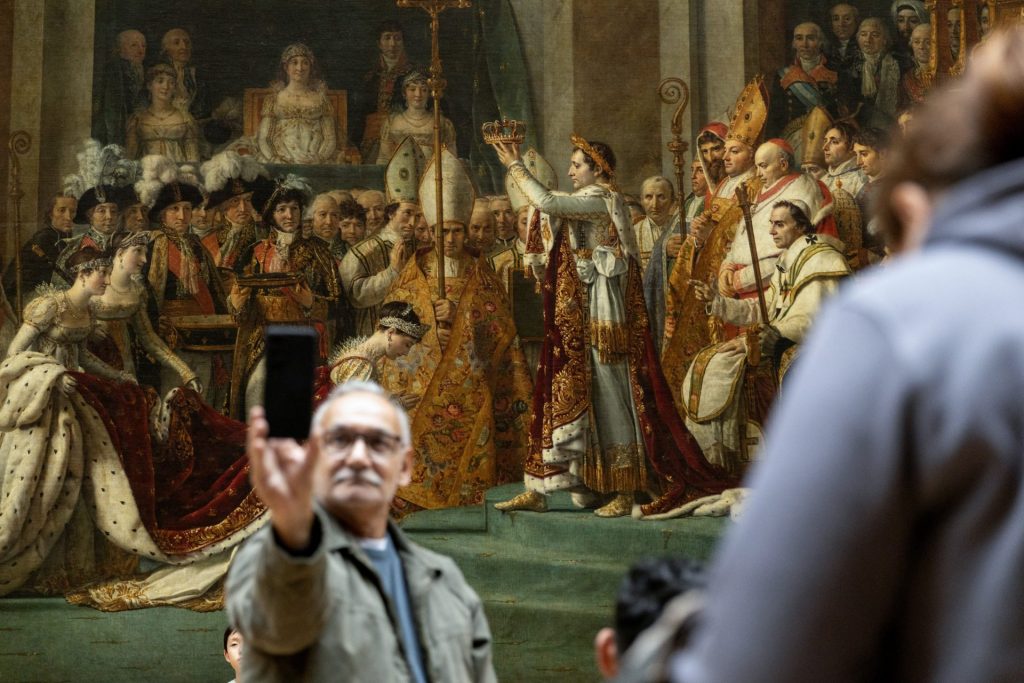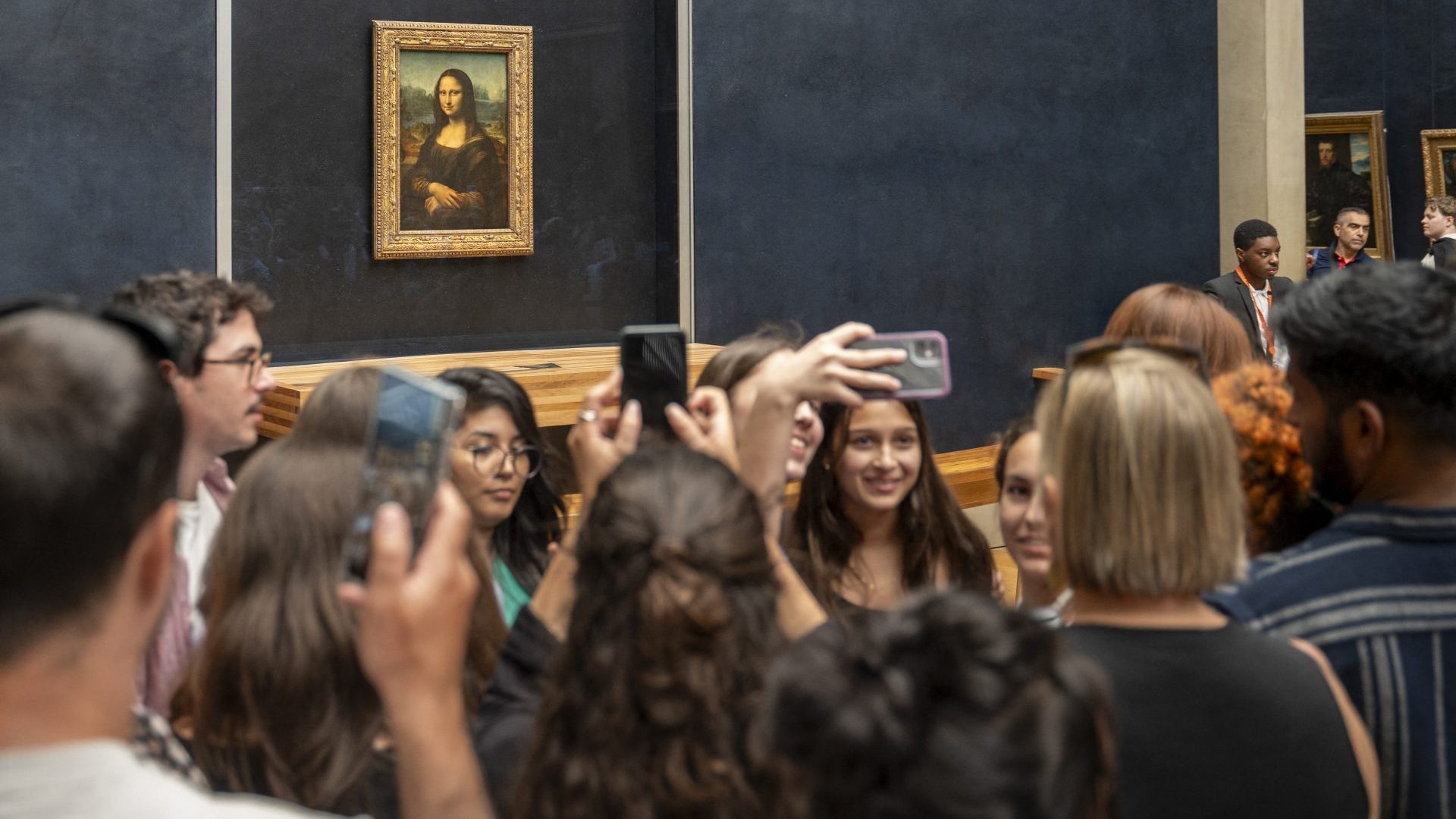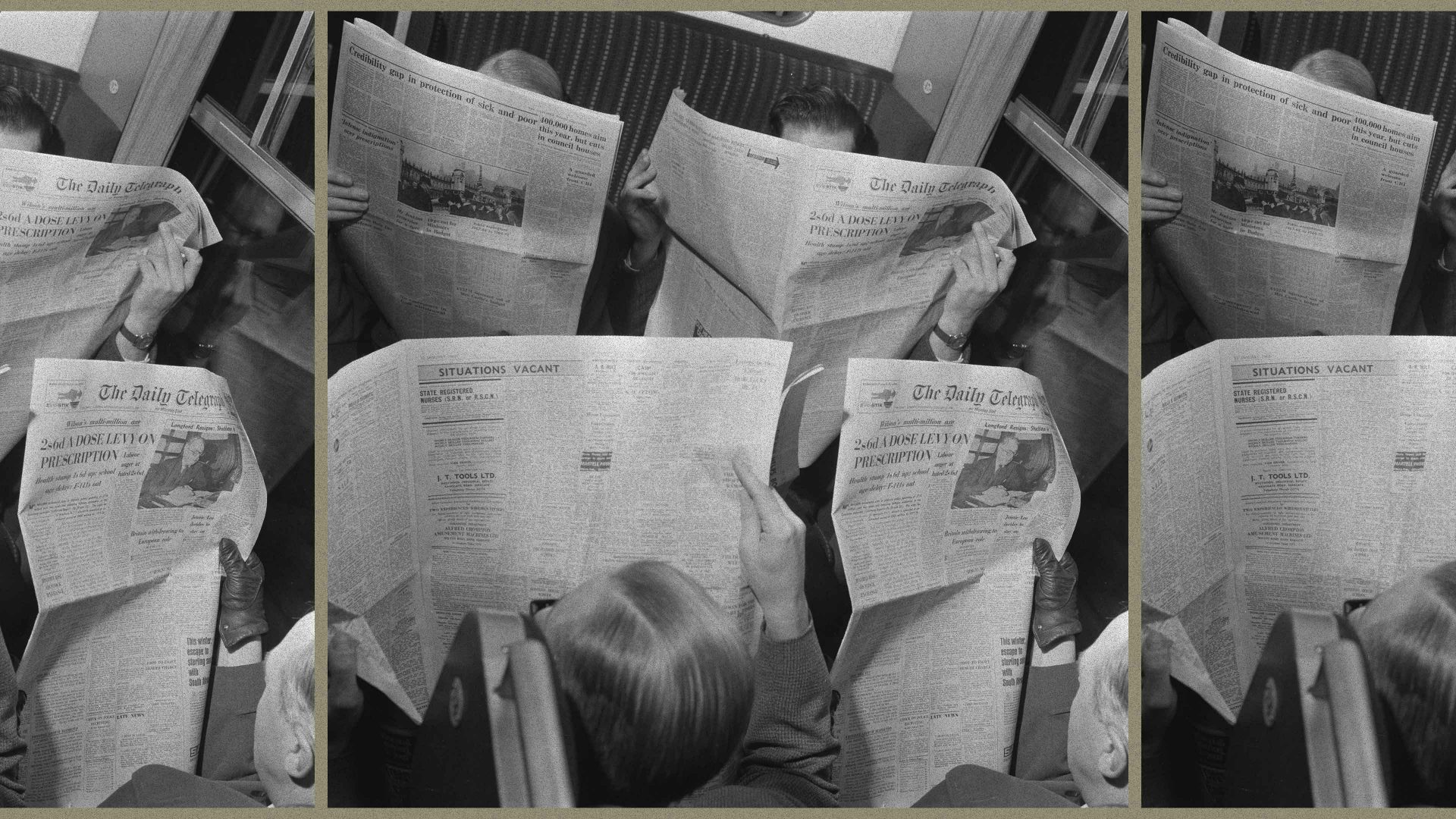I was in Paris the other week (though not to steal jewels). So naturally, I went to the Musée d’Orsay.
Once there, I was unable to get a decent view of Starry Night on the Rhône. Enhanced security after the Louvre theft wasn’t the problem; it’s the most sought-after painting in the gallery and the path to it was constantly blocked by people taking photographs. Well, van Gogh himself was keen on selfies.
This is the slightly less famous Starry Night: the swirly one he painted at Saint-Rémy, which is now in New York, is beautiful and disturbing; this one is gentler, with a couple in the foreground that van Gogh identified in a letter to his sister as lovers. The constellation, the Great Bear, dominates the sky.
It’s a belter of a picture, but this time I had to take it on trust. That’s galleries for you. The next day, I went to the Musée de l’Orangerie, home of Monet’s enormous canvases of water lilies. Here, the press of the crowd was easier to avoid, not least because the total area of Monet is 200 times greater than the Vincent van G.


Here, there was a different phenomenon on view. Not so many selfies, far more second-party involvement. It was mostly young Japanese women posing before the paintings: wait for the light on those cheekbones – click!
It occurred to me that the modern way of appreciating great art is to turn your back on it. It’s an unworthy thought, I know, and I sometimes get unworthy thoughts. But on this occasion, I tried to rise above them.
Monet offered these paintings to the government the day after Armistice Day in 1918. They occupy two oval rooms with skylights: together the rooms make the shape of the symbol for infinity ∞. It’s been described as the Sistine Chapel of impressionism. The eight canvases are all 1.97 metres high and collectively 91 metres long.
I don’t think any human has created anything more lovely.
The Orangerie poseuses didn’t really get in the way, not much anyway and besides, they were amusing to watch. And such very fine cheekbones.
Back at the d’Orsay, there were plenty of great paintings with a less powerful magnetic attraction: I had Gaugin’s The White Horse to myself. This one shows an Eden of jungles, horses and women and you’ll find it in The Horse: A Celebration in Art, which I wrote with my sister Rachel Barnes, an art historian. The picture made me very happy. Unfortunately, I forgot to take a selfie.
The traditional thing to do in any art gallery is to sneer at everybody else: lesser beings, ordinary people whose appreciation of art is so vastly inferior to one’s own. But the art in Paris had drawn their Japanese viewers across 6,000 miles, 10 times my own journey. I ought to have felt humble.
Stephen Potter, author of the classic Gamesmanship, wrote a follow-up called One-Upmanship, published 1952. Here’s how to get one-up on fellow gallery-goers: examine a grating and say: “The influence of William Morris even here!” Or look at a fire extinguisher and exclaim – loudly – “Now that, to me, is a beautiful object.” My sister and I often repeat this line, though quietly.
How could I have shown my superiority to the selfie-takers? Shoved my way to the front and burst into tears? Composed a deathless sonnet to the lovers who stand beneath the Great Bear? Written a doctorate-length thesis on the influence of Warhol in the September 1888 work of Vincent van Gogh?
I’m not sure I can explain my delight in any painting in English, French or Japanese: words are more likely to get in the way than explain anything. I was reminded of the death of Bergotte, the novelist in Marcel Proust’s À la recherche du temps perdu, or In Search of Lost Time.
Bergotte meets his end in a picture gallery. He’s looking at Vermeer’s View of Delft and sees a patch of yellow wall; and something about that dramatic detonation of colour – always rather a Vermeer speciality – overwhelms him. “That is how I ought to have written,” he says to himself. “I ought to have gone over them with a few layers of colour, made my language precious in itself, like this little patch of yellow wall.”
Perhaps he means he should have written like Proust. But the trouble with writing or talking about the visual arts is that words aren’t really up to the job. Which is why we have paintings. And selfies. I can’t tell you about the meaning of Starry Night, but here I am smiling in my new Paris t-shirt. Damned if I could do better.
Suggested Reading


The new grand tour: charting Italy’s art geography
I could, I suppose, ask: “What do these selfie-takers get from their exposure to great art? Surely they’re missing the point.” Anthony Burgess tells this story somewhere in his vast oeuvre. When he was in the army there was frequent reference to “a dirty book” that was available for those on night-time guard duty. No one thought of removing it, always leaving it for the next poor bugger.
When Burgess’s turn came round, he found the dirty book all right. It was his own copy of DH Lawrence’s Fantasia of the Unconscious. Perhaps you could get aroused by chapter three: “Plexuses, Planes and So On.” Or go straight to chapter eight: “Education in Sex in Man, Woman and Child.”
It’s a formidable and rather forbidding work. Burgess had no objection to people looking for the dirty bits in this or any other book: not least because in doing so they might find something else. In the same way it’s unwise to despise any apparently inconsequent approach to paintings.
Perhaps something of the beauty and power of these great works haunts every selfie-taker for a lifetime. Perhaps in years to come they will look over the photos they took on that trip to Paris and say: God, yes. That was a trip. Me and my beloved. I’ll never forget those lovers, the Great Bear, the starry sky.
I have a kayak. I keep it on the banks of a river in the Broads in Norfolk. In summer there are water lilies on the river in places where the flow is at its most sluggish. On the banks there are flag iris, purple loosestrife, hemp agrimony, fleabane, water mint. Every year I paddle past them with the light bouncing off the water, sometimes direct sunlight, sometimes filtered by clouds, on windy days alternating.
Here in those Monet waterlilies, framed with weeping willows, illuminated by both the sun and the brilliance of the artist, I found the same sort of thing – but miraculously lifted far beyond my own scope. It was like 200 square metres of yellow wall, and with Bergotte I wished I could write them, and with Bergotte I knew I never should. Never mind: I’ve got the lilies.
And so have we all, because that’s what great paintings do. They unite us, and do so far beyond the limitations of language.
But there’s another way of looking at it.
“The shuffling and unfolding of the information of body in sensory space is enacted across a gap or trajectory of subjecthood that is multiple and present. Subjectivity is the lens and connector through which the spatiotemporal dislocation gets focused and bridged.”
This is from the art writer Carolyn Guertin. The passage is quoted by the painter Rob Adams in his blog and spoofed in captions to his own work: “Here I test the boundaries between individual experience and the transition to the ineffable isolation of the individual. Or some paint I smeared about to suggest a bloke on Weymouth Beach.”
I honestly don’t understand a word of Guertin’s stuff, and I have two doctorates – admittedly both honorary, but I’m still pretty swanky about them. Please understand that my criticism is not aimed at the individual – perish la pensée – but at an entire genus whose diagnostic trait is the flight from comprehensibility as a first response to art.
The game itself is mildly amusing, and sometimes referred to as Art Bollocks. You can even find websites like artybollocks.com to generate your own. Example: “With influences as diverse as Derrida and John Cage new synergies are generated from both constricted and discovered forms…”
But mock it how you will and how you must, the real thing persists. You can find it at great galleries and local shows. It may be meaningless from one word to the next, but when taken in its entirety, its meaning is crystal clear.
It means that art is for the elite. Not for the likes of you and me. If you don’t understand my words – and believe me, you’re not meant to – you’re unworthy of great art. Get out! And stay out! Let’s keep art exclusive!
I have some advice to the people who write and talk and lecture about such stuff, whether it’s about their own works or those of others. Next time you see a great work of art, forget words. Forget about being clever. Forget about dazzling the laity. Forget about impressing your fellow art professionals. Just look at the bloody painting.
And then take a selfie.
Simon Barnes is an author and journalist




